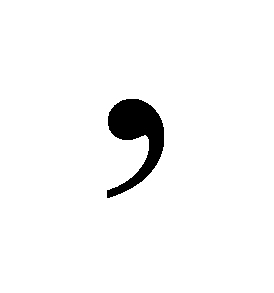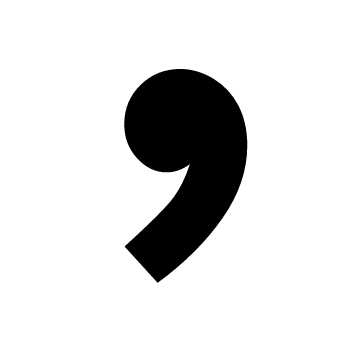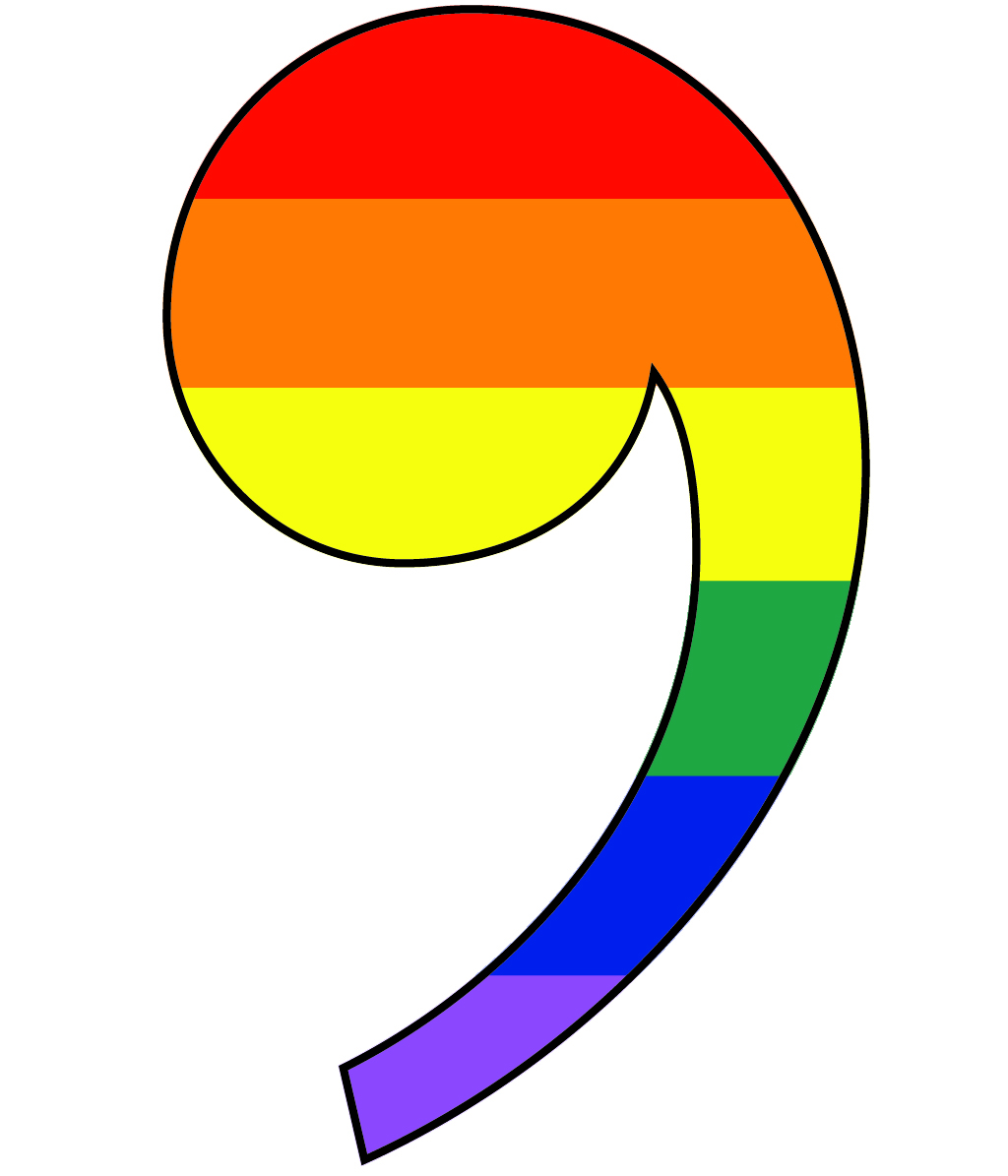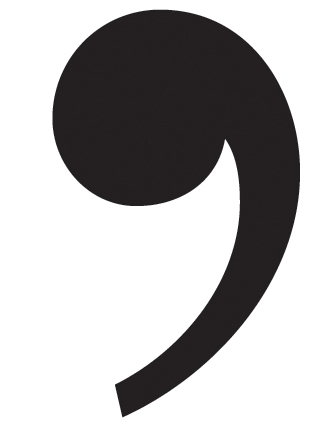Comma
The comma ( Pl comma or commas, also: the comma) is a punctuation mark, and in many countries the decimal point.
Punctuation mark
In the grammar, the comma is used to structure the sentence and separates certain elements from each other: Thus, in the German comma between main clauses and subordinate clauses, but also set between individual elements of a list. Likewise, appositions and reenactments are separated by commas from the rest of the sentence. Therefore point errors are not minor matters, but grammatical errors.
Point is derived from the ancient Greek κóμμα ( comma ) = Cut, Section ago, comes also the plural commas. The present form of the comma is on the printer and typographer Aldus Manutius (d. 1515) due, who developed it with the launch of another set of characters from the Virgel.
Philip of Zesen (d. 1689) Germanized the term comma with comma. The word has been, or will be, inter alia, by Bertolt Brecht, used in older Duden spending and even in recent works; nevertheless is " comma" used quite rarely in Germany and Switzerland, while the word in Austria is still in use.
The comma contributes to the clarity and readability of texts, there goes contrary to the spoken speech lost the intonation on the paper. Thus, the following sentence without commas in the first reading confusing because it creates a strong wrong track effect ". Manfred read the book on the knees of the daughter a bedtime story before " Only with the commas the sentence is understood with respect to the question on whose knees the book is now: " Manfred was reading the book on his knees, the daughter a bedtime story before. " an eingängigeres example of the various possible meanings, which are controlled by the commas is, " Manfred read the book on his knees to end. "and" Manfred read the book on his knees, to the end. " In the first sentence Manfred reading the book until the very end, while he kneels. In the second sentence Manfred reads a section, but not necessarily the whole book to the end, while the book there is on Manfred's knees.
Another example of a double meaning is a fictional short story. A criminal sentenced to be hanged, but the king learns by a messenger at the last second that the doomed is innocent. Now he directs a message to the executioner, the message reads: " Do not wait, hang on! ' The executioner gets the message and attaches the innocent, to the indignation of the king. This had made a lack of punctuation, he actually wanted to write, "Wait, do not hang! "
For the correct and standardized use of commas comma rules, which are described in the grammar of a language are. The comma rules for the German were changed in the course of spelling reform of 1996 with the aim of simplifying fundamentally; while the use of commas was released in many cases. The revision of the reform of rules in 2006, the use of commas was again modified and mainly withdrawn many exemptions with the aim of better readability.
The commas subject in artistic works of a larger freedom: In poetic texts can completely disappear punctuation, are used for special emphasis or structure or even be part of a language game itself. Also epic texts often have a very idiosyncratic commas to - as an example, we refer to Kleist, who put the commas not by rules, but according to his will.
Pay
In most European languages (including German ), the comma in mathematics is used in a decimal number as a decimal separator to separate the integer part from the part that forms the contrast to integer. The number 12.34 is correct twelve point three four pronounced (especially in Austria mostly twelve point thirty-four ). If the comma delimiter in addition appear as bulleted lists, is to avoid confusion with decimal numbers, dodged the semicolon.
In the English-speaking world the comma to separate the thousands place is used in figures; the English meaning of dot and comma in numbers is therefore reversed from the German use.
National Features
In Austria, the term " point " only with numbers is used as a term for the punctuation mark itself, the term " comma" established.
In Switzerland, a point instead of a comma as the decimal separator in currency values usually, but not in the other case of numbers.










